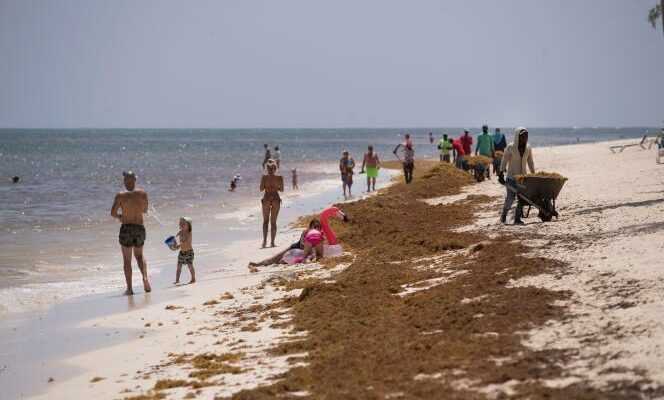The best-maintained roads in the Dominican Republic are the ones Dominicans never drive. To ride on these impeccable mixes, lit at night, you have to leave the country of President Luis Abinader and enter that of the resorts. Punta Cana, a strip of territory on the east coast of the country, 3 kilometers wide, between the white sand beaches and the highway that crosses this kingdom of entertainment and idleness. An alignment of tourist enclaves with swimming pools, standardized buffets and private access to the beach – there are 70 kilometers between Cap Cana, in the south, and Uvero Alto, the northern end. For the time being, because the affluence feeds a devouring expansion.
Very quickly reopened to visitors during the Covid-19 pandemic, the Dominican Republic – and Punta Cana, in particular – attracts American, Russian and European tourists like a magnet. While its neighbor Haiti is drowning in violence and institutional chaos, the Caribbean island was the first country in the world to find as many visitors as before the health crisis. In winter 2021, it was even the best-selling foreign destination among the French.
Punta Cana has become, with Cancun in Mexico, the symbol of “all-inclusive” tourism. In the land of resorts, some streets bear the names of hoteliers, a symbol of the privatization of this strip of land by large private groups, particularly Spanish ones. The area has 160,000 hotel rooms or short-term apartments, more than Paris. In 2019, 4 billion dollars (3.7 billion euros) were spent by the 3.5 million tourists who landed in Punta Cana. A new record is looming for 2022.
An eight-lane lined with American-style billboards acts as a border with the reality of the Dominican Republic. You have to cross a crossroads to enter Friusa, where some of the Dominicans and Haitians who operate the enclaves live. The tricky streets, sometimes paths, lead to an anarchic mix of brightly colored Creole huts, sheet metal shacks and low bare cement brick buildings. Every 100 meters, devastating speed bumps, which are not unrelated to the omnipresence of garages in every city in the country.
Violent contrast
There is no running water in Friusa, any more than in Veron, the main town outside the hotels. Hundreds of private boreholes will draw water from the basement, contaminated in the absence of a waste collection system – like most of the country, which has 350 wild dumps. Electricity, which is particularly expensive, is consumed using prepaid cards. It is in Veron that we come across clusters of Haitians from early morning on the lookout for construction vans, in the hope of working on the construction of new tourist complexes.
You have 77.13% of this article left to read. The following is for subscribers only.
